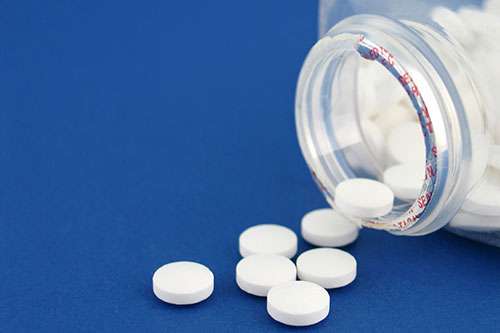Ballooning platelets and the future of anti-thrombotic drugs

Membrane ballooning in platelets during the blood-clotting process is driven by a coordinated system of salt and water entry which may be modified pharmacologically, a new study from the University of Bristol has found. The research could ultimately lead to the development of better 'blood-thinning' drugs for patients who experience complications with or are resistant to existing antiplatelet drugs such as aspirin.
Platelets play a central role in stopping bleeding (haemostasis) and causing blockages in arteries (arterial thrombosis), particularly in coronary artery disease. At sites of blood vessel damage, they rapidly form aggregates or clumps which are stabilized by the local production of an enzyme called thrombin and generation of a clot of fibrin (a type of protein).
Platelets coordinate this local clotting process by exposing a certain type of lipid (fat) called phosphatidylserine (PS) on their cell surface, allowing recruitment of the components of the clotting system that lead to the generation of a clot. This is called a procoagulant surface. The procoagulant activity therefore depends upon the surface area of membrane with exposed PS.
In a paper published today in Circulation, Professor Alastair Poole of Bristol's School of Physiology and Pharmacology and colleagues show that this surface area is enhanced substantially by the formation of balloon structures from platelets, with subsequent procoagulant-spreading of platelets over the adherent surface. Bleeding defects may thus be due to aberrant procoagulant membrane dynamics as exemplified by patients with Scott syndrome, a rare congenital bleeding disorder where PS exposure is blocked.
Furthermore, they found that a coordinated system of salt and water entry drives this platelet membrane ballooning and procoagulant-spreading – and that the system can be modified pharmacologically.
Acetazolamide (a drug used in the treatment of glaucoma and a number of other conditions) has actions which include the blockade of water entry into cells. The researchers showed that acetazolamide not only substantially impaired ballooning and thrombin generation (clotting) in the test tube, but also markedly reduced thrombus formation in vivo.
Drugs that modify water entry into platelets may therefore represent novel antithrombotic therapies for the management of coronary artery disease and prevention of stroke. Furthermore, the research provides added rationale for monitoring patient bleeding risk when acetazolamide is administered with anticoagulants.
Professor Poole said: "The future development of this project will involve determining whether acetazolamide, and other related pharmacological agents, could be re-purposed as novel anti-thrombotic drugs to help manage heart disease and stroke, in addition to the pre-existing antiplatelet drugs – such as aspirin and clopidogrel – that are widely used in the clinic.
"The main drawbacks of such pre-existing drugs are that a significant proportion of the population have bleeding problems associated with their use, and that many people are 'resistant' to their use. The introduction of a novel antithrombotic, operating in a very different manner to these drugs, may offer important alternative approaches for the management of patients with such complications."
More information: "Coordinated Membrane Ballooning and Procoagulant-Spreading in Human Platelets." Circulation. 2015;CIRCULATIONAHA.114.015036, published online before print September 1 2015, DOI: 10.1161/CIRCULATIONAHA.114.015036
"Procoagulant Platelets: Not Just Full of Hot Air." Circulation. 2015; CIRCULATIONAHA.115.018833, published online before print September 1 2015, DOI: 10.1161/CIRCULATIONAHA.115.018833

















